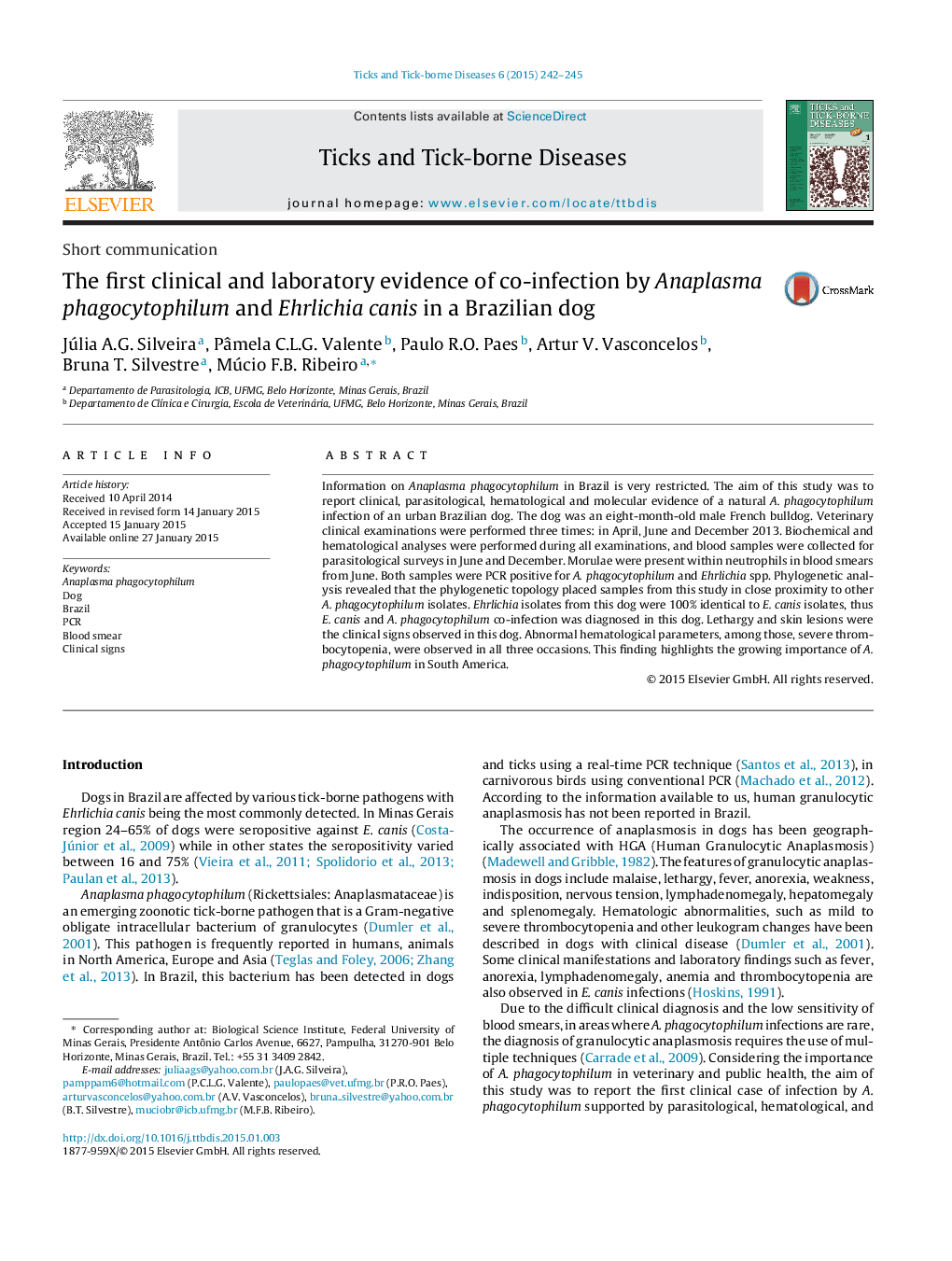| Article ID | Journal | Published Year | Pages | File Type |
|---|---|---|---|---|
| 2473918 | Ticks and Tick-borne Diseases | 2015 | 4 Pages |
Information on Anaplasma phagocytophilum in Brazil is very restricted. The aim of this study was to report clinical, parasitological, hematological and molecular evidence of a natural A. phagocytophilum infection of an urban Brazilian dog. The dog was an eight-month-old male French bulldog. Veterinary clinical examinations were performed three times: in April, June and December 2013. Biochemical and hematological analyses were performed during all examinations, and blood samples were collected for parasitological surveys in June and December. Morulae were present within neutrophils in blood smears from June. Both samples were PCR positive for A. phagocytophilum and Ehrlichia spp. Phylogenetic analysis revealed that the phylogenetic topology placed samples from this study in close proximity to other A. phagocytophilum isolates. Ehrlichia isolates from this dog were 100% identical to E. canis isolates, thus E. canis and A. phagocytophilum co-infection was diagnosed in this dog. Lethargy and skin lesions were the clinical signs observed in this dog. Abnormal hematological parameters, among those, severe thrombocytopenia, were observed in all three occasions. This finding highlights the growing importance of A. phagocytophilum in South America.
